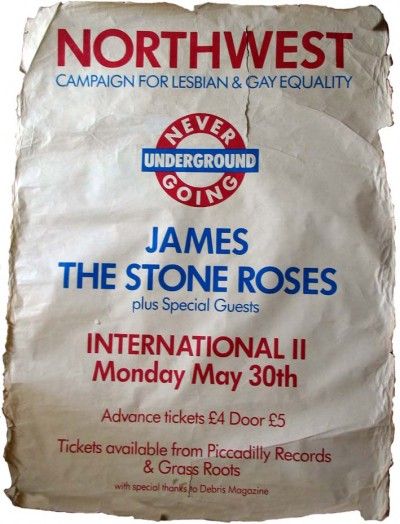
James, The Stone Roses
International 2
Poster, 1988
The excerpt below is taken from an Ian Brown interview with Lindsay Baker from The Guardian, Saturday 2 February 2002:
"In 1998, some incoherent remarks Ian Brown made to Melody Maker, linking the military force and violence of the ancient Greeks, Romans and Nazis to homosexuality, prompted astonishment and disapprobation. He insists his words were twisted. The subject of conversation was a Noël Coward record, "and I went on too much. I'd been reading about it and it was on my mind". He claims that he was simply making the point that the main power bases in Europe were well known for being cultures in which homosexuality was commonplace. "It was just the knowledge of history," he says, adding that he received a letter from a university professor saying that he had his facts right. "It happened. Me saying Hitler happened, that doesn't make me a Nazi. I was saying it happened, not putting anyone down." His voice brims with indignation. "It annoys me, because the gay people I've known all my life might read that and think I've gone like this."






















